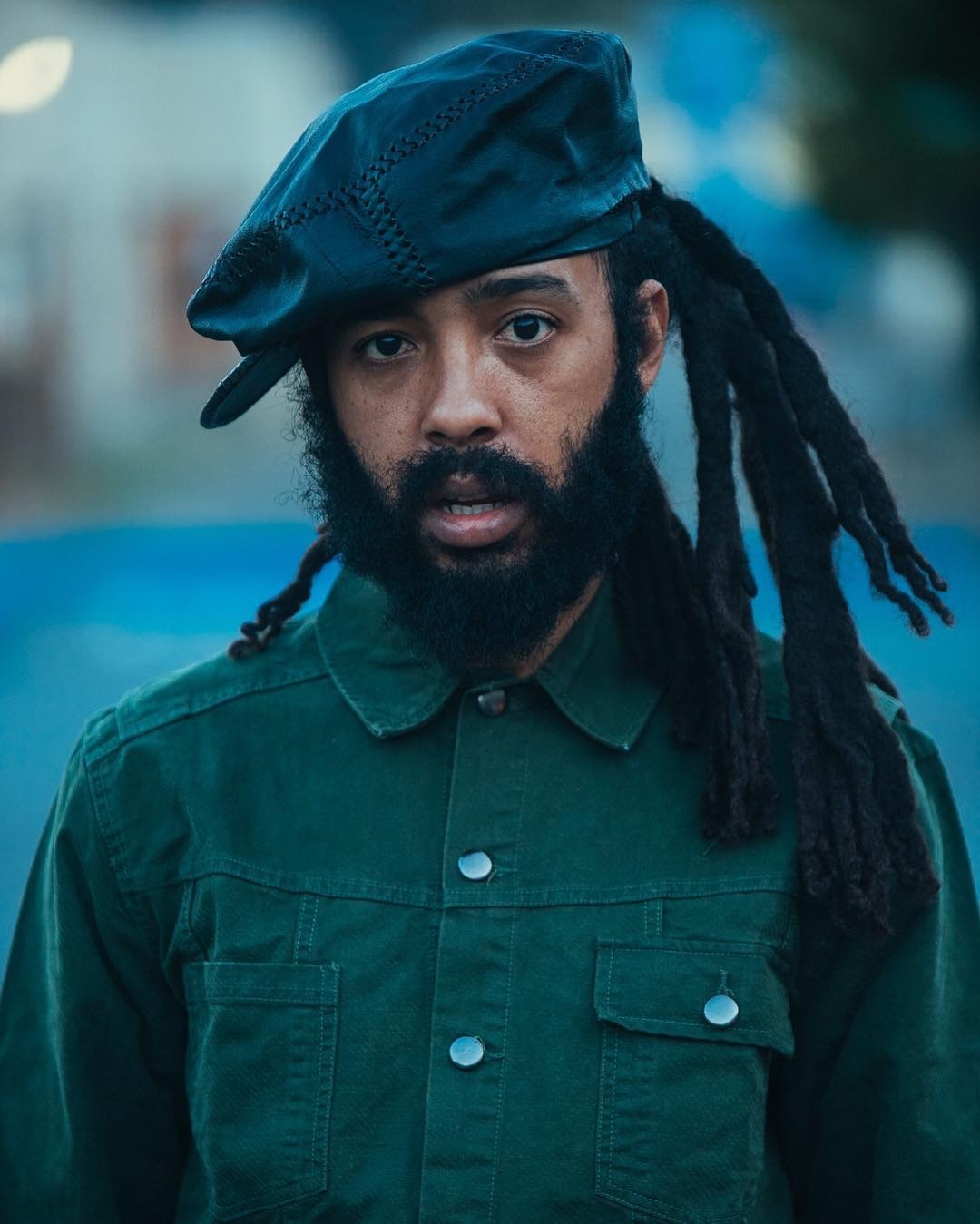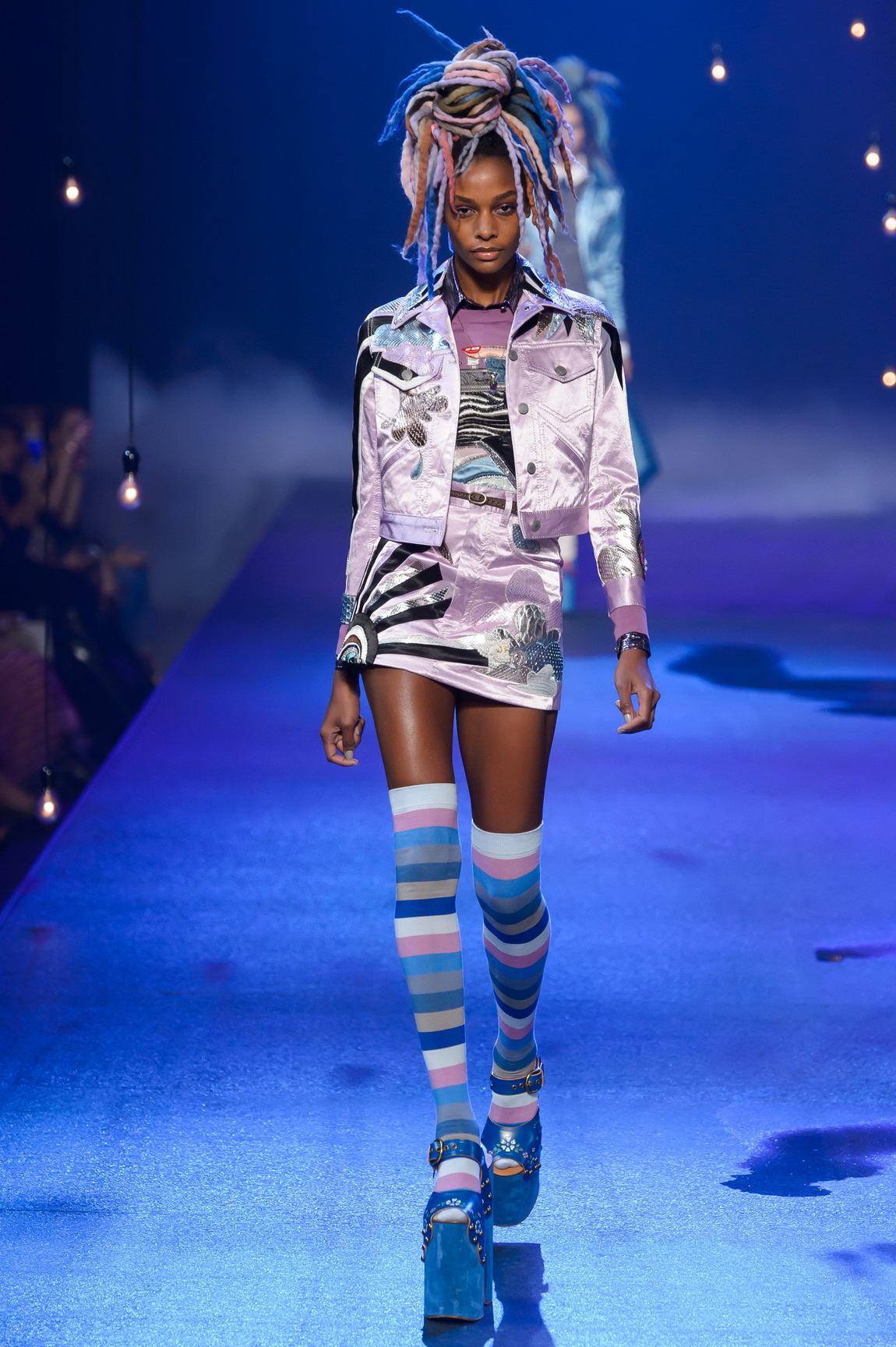When Marc Jacobs’ bevy of models circled the stage of the Hammerstein Ballroom in New York last month, the crowd hushed to devour the details. Each woman was seven feet of platform boot, glitter, and satin, topped with a heap of pastel-hued wool dreadlocks.
While the show was widely praised, some critics called cultural appropriation. And when, yesterday, Rihanna Instagrammed a photo of herself with thigh-grazing locs alongside the caption “buffalo $oldier,” several commenters suggested that this was a sign that she agreed.
But who, exactly, did the designer appropriate? Locs are a global hairstyle that no ethnic group can entirely claim. The dialogue revealed our collective cultural hierarchy, which positions certain voices and perspectives over others, and gaps in our understanding of the histories and significance of outside cultures.
New York-based Guyanese-American stylist Orin Saunders is an expert on Afro-textured hair styles. He has finessed celebrity heads including Whoopi Goldberg’s and coined the terms “Bantu knots” and “African locs.” Unlike the “free-form” dreadlocks sported by Bob Marley, he tells me, African locs — also called “cultivated locs” — are deliberately made by twisting or knitting hair together into strands. He offers these styles to clients of all races. Saunders explains that “locs are a human style because anyone’s hair matts and forms locs when left uncombed. They’re most common among black people due to the unique coil in their hair which locks more quickly, but all hair will lock if left uncombed.”
He’s right. So, a primer on the style’s origins: Locs have existed for centuries among people all over the world, in a multitude of proportions — from monks in Ethiopia to Egyptian pharaohs and Kenya’s Masai warriors. Variations have existed within communities of Australian Aboriginals, New Guinea tribespeople, Indian sādhus and yogis, and Celtic warriors. Centuries ago in China, locs symbolized good luck among nobles and ascetics.
Marc Jacobs and his hair stylist Guido Palau explained that their look was inspired by rave culture, Boy George, and transgender director and Marc Jacobs campaign star Lana Wachowski — not famed Rasta Bob Marley. But that logic is problematic; Bob Marley introduced locked hair into the pop-cultural lexicon during his glorious rise in the 70s. It was Marley who inspired others (including, later, Boy George and Wachowski) to create new styles based on his precedent. Which is fine: so many good ideas borrow from other good ideas. But a lack of understanding is not.
The chunky strands associated with Marley are known as “dreadlocks” or “free-form locks.” The strands are characterized by their all-natural formation and are a spiritual tool for followers of Rastafarianism. Many Rastafaris — but not all — take the same Nazarite vow described in the original canonical laws of the Israelites. This is the same vow that prevented the Biblical figure Samson from cutting his locked hair to preserve his spiritual strength.
Jamaica has a rich but little-known Jewish heritage. And, as journalist Ross Kenneth Urken recently noted, “Rastafarianism is inextricably intertwined with Judaism: the religion’s messiah, the Ethiopian emperor Haile Selassie, claimed descendance from King Solomon and it shares symbols like the Lion of Judah and kosher laws.” Rastafarianism grew from the rural slums of Jamaica in the 1930s, which housed many different people, including the descendants of Sephardic Jews who fled the Spanish Inquisition centuries prior. And while there’s much diversity in thought among the Rasta community — because there’s no formal church or book of teachings — Bob Marley was the first artist to lay out the tenets of the religion through his songs.
The Rastas — and their locked hair — were initially shunned by fellow West Indians as well as the rest of the world. There was a saying way, way back, quoted by Marley’s business partner Don Taylor in a 1979 documentary: “You could be poor and decent — but not Rasta.” When reggae matured into a money-making commodity in the 70s, when Bob Marley sold out stadiums seating tens of thousands across the globe, the faith and lifestyle filtered into the middle-class. Suddenly, nice black people grew locs. White and Asian people sang along with the words of roots reggae. And, in 2016, seeing Rihanna wearing a full head of locked hair is a sign of how far dreadlocks have moved towards mainstream acceptance. (The term “dreadlocks” stems from fellow Islanders calling the style dreadful.)
The Rasta aesthetic has also been adopted by various outsider subcultures in the mid-to-late 20th century — from ravers, skaters, and hippies to Miami gang members. New York-based artist Bradley Theodore, who was born in the Turks and Caicos, has worn short high-top locs on and off since high school. He calls the style the “de la soul” because it was popularized by the 90s group De La Soul. He also points to the influence of Jean-Michel Basquiat and the many chunkily textured styles of dreadlocked icon Lisa Bonet. Like many, he enjoys the aesthetic association with the Rasta community: peaceful, earthy, progressive, and Pan-African.
Sasha Lane, the 20-year-old star of the new Andrea Arnold film American Honey, locked her hair as a protest against societal pressure to tame her natural curl pattern. She tells me it’s a “statement of mind that physically represents my personality and lifestyle,” symbolizing “freedom, culture, beauty.” She prefers a looser, less “kept” style and visits a specialized salon instead of doing it herself. It’s now been over three years since she first locked her hair, and she says she sees it as the best style for Afro-textured hair. No more worries with straightening, slicking back. “It’s allowed me to live my life naturally. Just wake up, shake them out, and go,” she says.
Jamaica is a small country and the Rasta community makes up just five percent of its population (Rastafarians number somewhere from 2 to 3 million worldwide). But, as many say, it’s a small country with a big culture to bring to the world. Bob Marley’s granddaughter Kaia Marley continues to see the influence of her grandfather and the Rasta community. “I see it everywhere, and not just [in] marijuana use,” she says. “From the music mashup to the way people are dressing, I see the rasta way of living. I think it’s cool that communities are so into juicing and natural things for food, skincare, and haircare now. It helps everyone to live better and healthier.”
What she’s most proud of, though, is the mindset. In the words of Bob Marley, it’s the feel. Marley said in that same 1979 documentary that anyone can copy his music — the simple chord structures and melodies — but they need to bring the feel.”I think just like Malcolm X and Martin Luther King, he inspired people to change how they think. You know, stand up for what they believe in. Use the resources we have, in our hands, to make a difference for everyone — not just ourselves,” Kaia says.
Young Islanders in 2016 have a revived interest in the original rasta movement. Now, no matter the night, you can hear the music of that movement across the Caribbean Sea: roots reggae. Vogue recently captured the revival in a short documentary starring reggae stars like Chronixx and Protoje, who both wear the free-formed locs of their predecessors.

In the end we all “appropriate” or borrow, so the offense is not in the action, but the mindset. When Jessica Williams shared a selfie this week featuring lavender faux-locs with her 100k Instagram followers, my first thought wasn’t if she thanked Marc Jacobs for the idea. It’s whether she was truly celebrating the beauty of the style and all that it symbolized.
I spoke to Derrick Scurry, the renowned African-American hair stylist who created the dreadlocked look of the dancehall-inspired spring/summer 2000 collection for Christian Dior. His face glowed as he described the experience: “We took straight hair and used glue from a spray can, sprayed it, and let it dry overnight; and it came out like long dreadlocks. There were a hundred models, we had to make at least 10,000 dreadlocks, and it was all the top models.” He continued excitedly, “Naomi Campbell, Christy Turlington… and I was popping them out because I came up with the concept to do it. Everybody loved it. We got the cover of WWD.”
Derrick admits it was a big deal to put dreadlocks on white models then, but it wasn’t met with the kind of controversy roused by the Marc Jacobs show. There was only the shock of seeing something “that’s never been done before.” He told me, “The clothes were fabulous; the pictures were fabulous; it was really a great day.” As for Marc, Derrick added, “Dreadlocks still get a bad rap. To me, it’s like the red-headed stepchild. I do a lot of afro-textured hair, but not a lot of people want dreadlocks. You rarely see it in a beauty, and, there’s maybe three actresses with locs. So, the more you can bring it out of it’s shell? It’s good.”
Perhaps, the most important thing isn’t who’s appropriating, but continuing, as a global community, to acknowledge joyfully the roots of our styles.
Credits
Text Kristin Huggins
